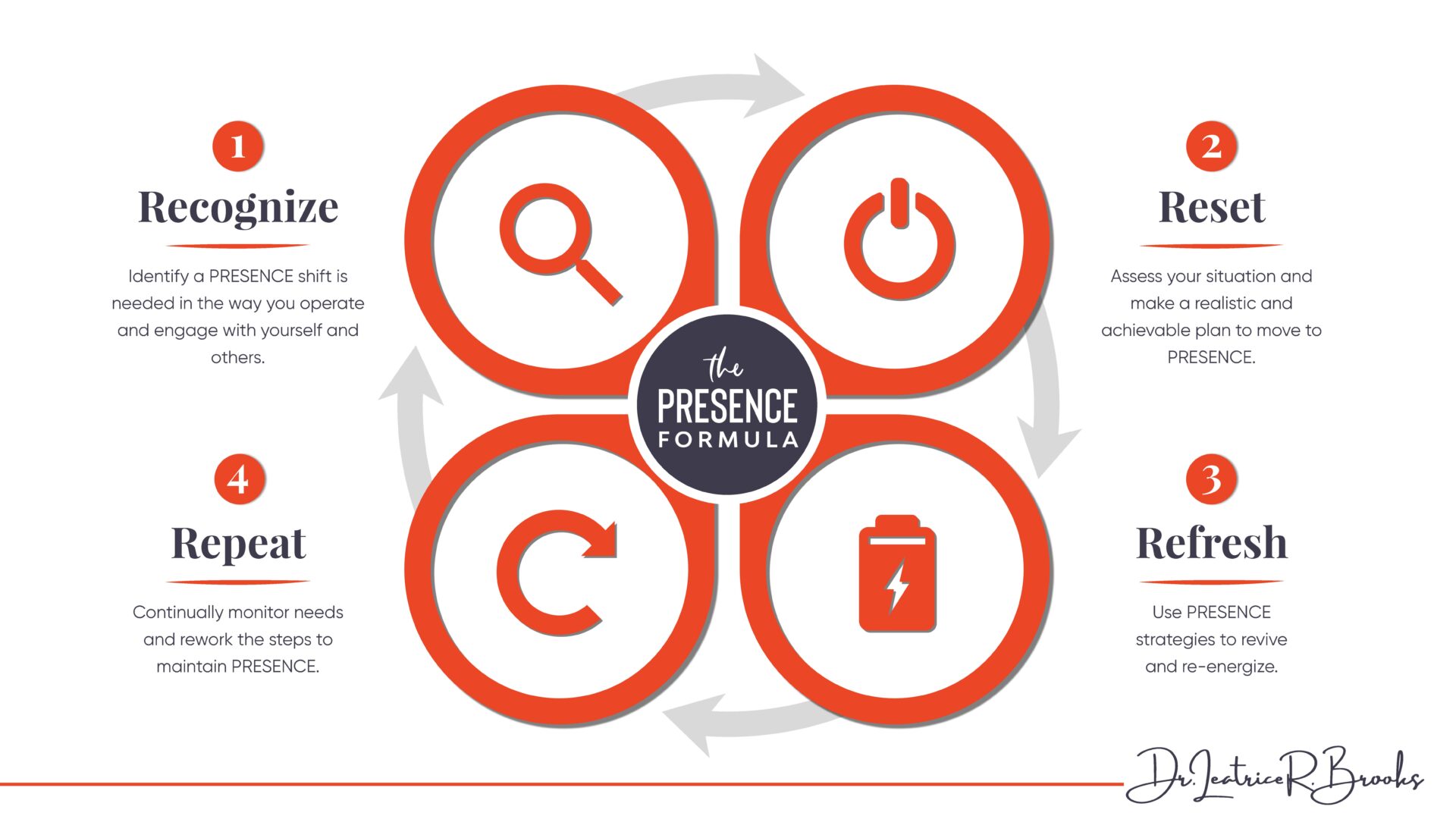External and Internal Presence: Showing Up Well On All Fronts
By Guest Columnist, Dr. Leatrice Brooks, LP
When I supervised therapists in training, I would tell them that looking the part was half the battle. If they showed up and at least looked like someone who knew what they were talking about, clients would be more likely to work through any missteps or confusion. Having the right image would also help to increase their confidence in their ability to help their clients move from where they were to where they wanted to be.
This mindset holds true for professionals who are starting their careers, transitioning into a new position or role, or just want to make a great impression. Wanting to show up well is why we work with image consultants like Kelly Duggan. It’s a significant first step and part of this idea we call presence.
The Other Kind of Presence
When I tell people I teach presence, they often assume I am referring to image. I have learned to clarify that I help leaders learn to be more present. It has to do with showing up as your true self. Presence involves staying connected to yourself on the inside, which impacts how you present on the outside. Being present helps you tap into who you are at your core, meet your needs in relationships, and repeatedly show up strong.
Here are three areas of presence that, when developed externally and internally, accelerate your professionalism and, subsequently, your success.
Congruency
There’s nothing like professionally meeting someone you feel good and excited about and later finding out it’s all smoke and mirrors. Congruency happens when you not only look the part, but you are the part. The image you represent fits with the aspects of yourself that people get to know over time. Congruency accelerates the relationship-building process and allows you to move partnerships along faster.
At a recent community event I ran into a business I serve. Although I don’t work directly with the people I saw, they shared that they had been receiving great feedback about the work I was doing with their people. These hiring agents felt good about hiring me, and had discovered that how I deliver is congruent with who I said I was in the consultation interview. When you’re present with yourself, you’re more congruent.
Consistency
People want to know what to expect, especially from those of us in leadership roles. They want to know we will show up as the same amazing person every time they engage. Consistency builds trust in relationships and communicates stability. It’s the foundation for excellent work and an essential aspect of presence.
It’s easier to be consistent when we attend to our internal selves as much as our external selves. We aren’t thrown off by the unexpected or situations that are not in our control. We are taking care of ourselves enough to acknowledge where we are and actively move through it. It doesn’t mean we don’t have feelings. It means they don’t rule us, and they don’t dictate our behavior or how we show up.
Authenticity
While some people may not care, by and large, most people want to know who you really are. It’s not a façade of yourself that gets put on to perform. Authenticity is the part of presence that connects people to who you are on the inside. It tells stories about us that our external image never can. Authenticity is the thread of ourselves that is woven into everything we do. It bridges the parts of our personality that get expressed in different settings. Authentic presence allows people in and provides room for you to get out, so to speak. It helps ensure your needs are met in relationships and that you will be able to meet the needs of others. It makes for candid, productive conversations and collaboration that gets lasting results.
Our external image is the first thing people notice and it is vital to professionalism and leadership. Whether we like it or not, decisions are made based on image. Kelly helps us shape our physical footprint and presence to show up well and confidently. Maintaining congruency, consistency, and authenticity with our external and internal presence is missing with many leaders. Too often, working on external presence is where many of them unintentionally stop. Our internal presence needs just as much attention. Without it, we lose the impact of our initial visual image.
Answer the following questions to continue your journey to congruency, consistency, and authenticity between your external and internal self:
- • What are your genuine thoughts and feelings, and how are you engaging them?
- • What relationship needs do you have, and how do you meet them?
- • What behaviors or experiences help you feel most connected to your true self?
- • What parts of yourself could use more attention, honoring, and nurturing?
Dig deeper into yourself and engage presence both inside and out.
The Presence Formula is a great tool to help you obtain and maintain internal presence. Use the Presence Formula Guide to learn the steps.

Dr. Leatrice Brooks, LP
Dr. Leatrice Brooks is a speaker, executive coach and Licensed Psychologist. She positions organizations to maximize productivity, master collaboration and teamwork, and retain high achievers.

